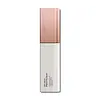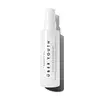What's inside
What's inside
 Key Ingredients
Key Ingredients

 Benefits
Benefits

 Concerns
Concerns

No concerns
 Ingredients Side-by-side
Ingredients Side-by-side

Water
Skin ConditioningAscorbyl Tetraisopalmitate
AntioxidantC15-19 Alkane
SolventPropanediol
SolventHydroxyethyl Acrylate/Sodium Acryloyldimethyl Taurate Copolymer
Emulsion StabilisingMethylpropanediol
SolventSqualane
EmollientGlycerin
HumectantTocopherol
AntioxidantTocopheryl Acetate
AntioxidantHelianthus Annuus Seed Oil
EmollientBiosaccharide Gum-1
HumectantPhenoxyethanol
PreservativeDisodium EDTA
Xanthan Gum
EmulsifyingEthylhexylglycerin
Skin ConditioningCitric Acid
BufferingPolysorbate 60
EmulsifyingSodium Lactate
BufferingSodium Hydroxide
BufferingWater, Ascorbyl Tetraisopalmitate, C15-19 Alkane, Propanediol, Hydroxyethyl Acrylate/Sodium Acryloyldimethyl Taurate Copolymer, Methylpropanediol, Squalane, Glycerin, Tocopherol, Tocopheryl Acetate, Helianthus Annuus Seed Oil, Biosaccharide Gum-1, Phenoxyethanol, Disodium EDTA, Xanthan Gum, Ethylhexylglycerin, Citric Acid, Polysorbate 60, Sodium Lactate, Sodium Hydroxide
Water
Skin ConditioningButylene Glycol
HumectantGlycerin
HumectantPropanediol
SolventAlcohol
AntimicrobialPhenoxyethanol
PreservativeGlyceryl Tetrahydrofarnesylacetate
EmulsifyingSodium Citrate
BufferingPEG/PPG-200/70 Copolymer
SolventEthylhexylglycerin
Skin ConditioningAlcaligenes Polysaccharides
EmollientAlbatrellus Ovinus Extract
Skin ConditioningHydrangea Paniculata Flower/Fruit Extract
EmollientCitric Acid
BufferingOrobanche Rapum Extract
Skin ProtectingPotentilla Miyabei Callus Extract
Skin ConditioningCeramide Ng
Skin ConditioningWater, Butylene Glycol, Glycerin, Propanediol, Alcohol, Phenoxyethanol, Glyceryl Tetrahydrofarnesylacetate, Sodium Citrate, PEG/PPG-200/70 Copolymer, Ethylhexylglycerin, Alcaligenes Polysaccharides, Albatrellus Ovinus Extract, Hydrangea Paniculata Flower/Fruit Extract, Citric Acid, Orobanche Rapum Extract, Potentilla Miyabei Callus Extract, Ceramide Ng
 Reviews
Reviews

Ingredients Explained
These ingredients are found in both products.
Ingredients higher up in an ingredient list are typically present in a larger amount.
Citric Acid is an alpha hydroxy acid (AHA) naturally found in citrus fruits like oranges, lemons, and limes.
Like other AHAs, citric acid can exfoliate skin by breaking down the bonds that hold dead skin cells together. This helps reveal smoother and brighter skin underneath.
However, this exfoliating effect only happens at high concentrations (20%) which can be hard to find in cosmetic products.
Due to this, citric acid is usually included in small amounts as a pH adjuster. This helps keep products slightly more acidic and compatible with skin's natural pH.
In skincare formulas, citric acid can:
While it can provide some skin benefits, research shows lactic acid and glycolic acid are generally more effective and less irritating exfoliants.
Most citric acid used in skincare today is made by fermenting sugars (usually from molasses). This synthetic version is identical to the natural citrus form but easier to stabilize and use in formulations.
Read more about some other popular AHA's here:
Learn more about Citric AcidEthylhexylglycerin (we can't pronounce this either) is commonly used as a preservative and skin softener. It is derived from glyceryl.
You might see Ethylhexylglycerin often paired with other preservatives such as phenoxyethanol. Ethylhexylglycerin has been found to increase the effectiveness of these other preservatives.
Glycerin is already naturally found in your skin. It helps moisturize and protect your skin.
A study from 2016 found glycerin to be more effective as a humectant than AHAs and hyaluronic acid.
As a humectant, it helps the skin stay hydrated by pulling moisture to your skin. The low molecular weight of glycerin allows it to pull moisture into the deeper layers of your skin.
Hydrated skin improves your skin barrier; Your skin barrier helps protect against irritants and bacteria.
Glycerin has also been found to have antimicrobial and antiviral properties. Due to these properties, glycerin is often used in wound and burn treatments.
In cosmetics, glycerin is usually derived from plants such as soybean or palm. However, it can also be sourced from animals, such as tallow or animal fat.
This ingredient is organic, colorless, odorless, and non-toxic.
Glycerin is the name for this ingredient in American English. British English uses Glycerol/Glycerine.
Learn more about GlycerinPhenoxyethanol is a preservative that has germicide, antimicrobial, and aromatic properties. Studies show that phenoxyethanol can prevent microbial growth. By itself, it has a scent that is similar to that of a rose.
It's often used in formulations along with Caprylyl Glycol to preserve the shelf life of products.
Propanediol is an all-star ingredient. It softens, hydrates, and smooths the skin.
It’s often used to:
Propanediol is not likely to cause sensitivity and considered safe to use. It is derived from corn or petroleum with a clear color and no scent.
Learn more about PropanediolWater. It's the most common cosmetic ingredient of all. You'll usually see it at the top of ingredient lists, meaning that it makes up the largest part of the product.
So why is it so popular? Water most often acts as a solvent - this means that it helps dissolve other ingredients into the formulation.
You'll also recognize water as that liquid we all need to stay alive. If you see this, drink a glass of water. Stay hydrated!
Learn more about Water